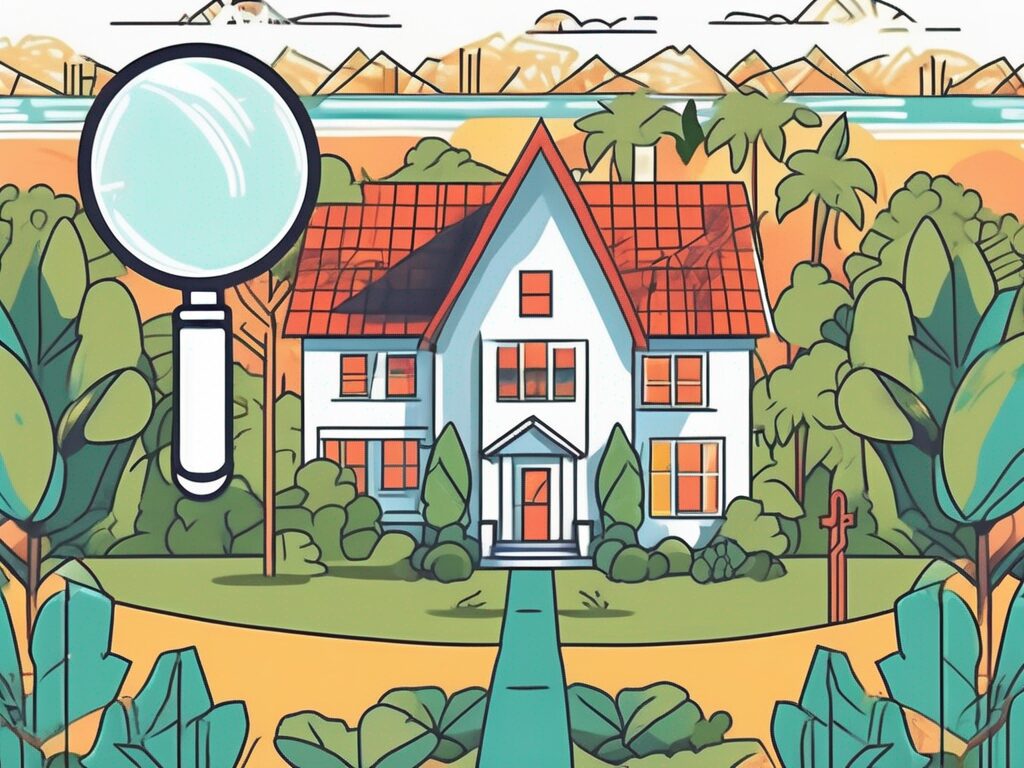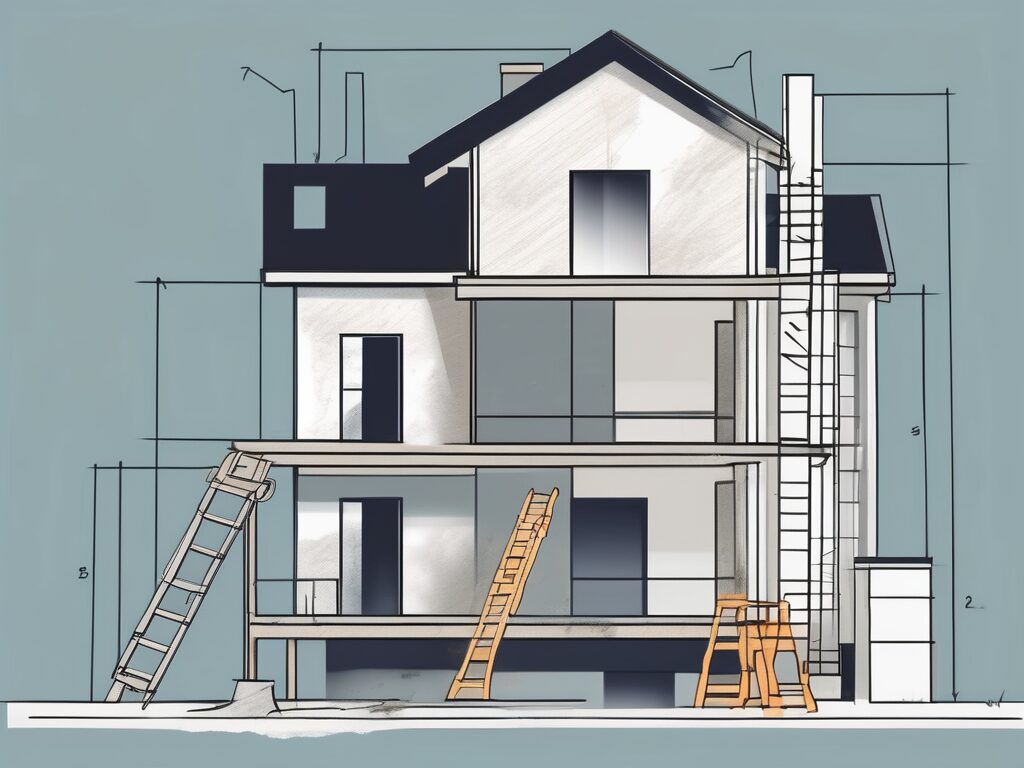
Agent A-Team or Solo Superhero? Finding the Right Real Estate Partner for Your Selling Journey in Wildwood Florida
When it comes to selling your home in Wildwood, Florida,…
January 29, 2024
If you’re interested in purchasing a fixer-upper home and need financing for both the purchase and renovations, a 203(k) loan could be the solution you’ve been looking for. This type of loan allows you to combine the costs of buying and renovating a property into one mortgage, making it easier to manage the entire process. In this comprehensive guide, we’ll walk you through the ins and outs of obtaining a 203(k) loan, from understanding the loan itself to determining your eligibility and navigating the application process.
The first step in obtaining a 203(k) loan is to understand how it works and what it can offer you. The 203(k) loan is an FHA-backed mortgage product that enables homebuyers to finance both the purchase and the renovation costs of a property. This type of loan is particularly beneficial for individuals looking to purchase a fixer-upper home, as it provides the necessary capital to cover repairs and upgrades.
When it comes to financing a home, many people often find themselves limited by the lack of funds available for renovations. However, with the 203(k) loan, homebuyers have the opportunity to not only purchase a property but also invest in its improvement. This loan program opens up a world of possibilities for those who are willing to put in the time and effort to transform a house into their dream home.
Before diving into the loan application process, it’s essential to familiarize yourself with the intricacies of the 203(k) loan. This includes understanding the types of repairs and renovations that the loan covers, as well as the limitations and requirements associated with it. By having a clear understanding of the loan’s scope, you can make informed decisions throughout the entire process.
The 203(k) loan is designed to cover a wide range of repairs and renovations, including structural changes, plumbing and electrical upgrades, roofing repairs, and even energy-efficient improvements. This means that you have the flexibility to address both cosmetic and functional issues in your fixer-upper home. However, it’s important to note that there are certain limitations to the loan, such as a maximum loan amount and specific eligibility criteria that must be met.
One of the key requirements of the 203(k) loan is the involvement of a HUD-approved consultant. This consultant plays a crucial role in assessing the property’s condition, identifying necessary repairs, and overseeing the renovation process. Their expertise ensures that the loan funds are used effectively and that the property meets all applicable standards and regulations.
Obtaining a 203(k) loan involves several steps, and it’s crucial to be aware of each one to ensure a smooth and successful application process. From identifying a property and getting it appraised to working with a HUD-approved consultant and securing the loan, each step plays a significant role in turning your dream fixer-upper into a reality.
The first step in the 203(k) loan process is to identify a property that meets your needs and budget. Once you have found a potential fixer-upper, it’s important to have it appraised to determine its current value and estimate the cost of repairs. This appraisal is a critical factor in determining the maximum loan amount you can qualify for.
After the appraisal, you will need to work with a HUD-approved consultant who will assess the property and create a detailed work plan. This plan outlines the repairs and renovations that will be covered by the loan and ensures that the property will meet all applicable building codes and safety standards. The consultant will also provide a cost estimate for the proposed work.
Once the work plan is finalized, you can proceed with securing the loan. This involves submitting a loan application, providing the necessary documentation, and meeting the eligibility requirements. The lender will review your application and work with you to determine the loan terms, including the interest rate and repayment schedule.
Once the loan is approved, the funds will be disbursed in a series of payments, known as draws, as the renovation work progresses. These draws are typically made directly to the contractors or suppliers involved in the project. Throughout the renovation process, the HUD-approved consultant will monitor the progress and ensure that the work is being completed according to the approved plan.
By following these steps and staying informed throughout the process, you can navigate the 203(k) loan application process with confidence. With the right resources and guidance, you can turn your fixer-upper into the home of your dreams, all while enjoying the benefits of a streamlined and comprehensive loan program.
While the 203(k) loan can be an excellent fit for many homebuyers, it’s essential to determine whether you meet the eligibility criteria. Factors such as your credit score, income, and debt-to-income ratio all play a role in determining your eligibility for this type of loan. By evaluating your financial situation and understanding the requirements, you can determine if a 203(k) loan is the right option for you.
When it comes to qualifying for a 203(k) loan, your credit score is a significant factor. Lenders typically look for a minimum credit score of 580 to approve your loan application. However, having a higher credit score can improve your chances of getting approved and may even result in better loan terms, such as a lower interest rate.
Income stability is another crucial aspect that lenders consider. They want to ensure that you have a reliable source of income to make your monthly mortgage payments. Typically, lenders prefer borrowers who have been employed for at least two years and can provide consistent income documentation, such as pay stubs or tax returns.
Additionally, lenders assess your debt-to-income ratio (DTI) to determine your ability to handle the loan’s financial obligations. Your DTI is calculated by dividing your total monthly debt payments by your gross monthly income. Generally, lenders prefer a DTI ratio of 43% or lower, although some may be more flexible depending on other factors.
Before embarking on the loan application process, it’s vital to evaluate your eligibility for a 203(k) loan. This involves assessing factors such as your credit score, income stability, and debt-to-income ratio. By understanding the eligibility requirements, you can better prepare yourself for the loan application and increase your chances of approval.
In addition to the credit score, income stability, and DTI ratio, there are a few other factors that lenders may consider when determining your eligibility for a 203(k) loan. These include your employment history, the property’s condition, and the loan amount you’re requesting.
Lenders typically prefer borrowers who have a stable employment history. They want to see that you have a consistent work record and are likely to continue earning income in the future. If you’ve recently changed jobs or have gaps in your employment history, it may raise concerns for lenders.
The condition of the property you intend to purchase or refinance is also important. The 203(k) loan is specifically designed for properties that require rehabilitation or renovation. Lenders will assess the property’s value and condition to determine if it meets the loan program’s guidelines.
Lastly, the loan amount you’re requesting can impact your eligibility. While there are no specific loan limits for a 203(k) loan, lenders may have their own restrictions based on factors such as the property’s value and your ability to repay the loan. It’s important to discuss your loan amount needs with your lender to ensure they align with their guidelines.
One of the most exciting aspects of a 203(k) loan is the opportunity to unleash the potential of your fixer-upper home. With the necessary funding in place, you can tackle various repairs and upgrades, turning a dilapidated property into a dream home.
The ability to finance home repairs and renovations is the primary advantage of a 203(k) loan. This section explores the types of repairs and improvements that the loan covers, ranging from basic necessities like plumbing and electrical work to more significant renovations such as kitchen remodels and room additions. By understanding the possibilities, you can plan your renovation project accordingly.
When it comes to home repairs, a 203(k) loan offers a wide range of possibilities. You can address basic necessities like plumbing and electrical work, ensuring that your home is safe and functional. With the loan’s flexibility, you can also take on more significant renovations, such as kitchen remodels and room additions, to create the home of your dreams.
Imagine transforming your outdated kitchen into a modern culinary oasis. With a 203(k) loan, you can finance the purchase of new appliances, countertops, and cabinets, giving your kitchen a fresh and stylish look. You can also expand the space by knocking down walls and creating an open-concept layout, perfect for entertaining guests and creating lasting memories with your loved ones.
But the possibilities don’t stop there. With a 203(k) loan, you can also tackle bathroom renovations, transforming a dull and outdated space into a spa-like retreat. You can install luxurious fixtures, such as a rainfall showerhead and a freestanding bathtub, creating a relaxing atmosphere where you can unwind after a long day.
Furthermore, a 203(k) loan allows you to address structural issues in your home. If you’ve been living with a leaky roof or a cracked foundation, now is the time to fix those problems. With the loan’s funding, you can hire professionals to repair and strengthen your home’s structure, ensuring its long-term stability and safety.
Another exciting possibility with a 203(k) loan is the opportunity to create additional living space. Whether you need an extra bedroom for a growing family or a home office for remote work, you can use the loan to add a room to your home. This expansion not only enhances your living experience but also increases the value of your property.
With a 203(k) loan, the only limit is your imagination. You can transform your fixer-upper home into a masterpiece, tailored to your unique style and needs. From cosmetic upgrades to major renovations, the loan provides the financial support you need to turn your vision into reality.
While a 203(k) loan can be advantageous for many homebuyers, it’s essential to consider both the pros and cons before committing to this type of financing.
Like any financial product, a 203(k) loan has its benefits and drawbacks. This section will outline the advantages, such as the ability to finance both the purchase and renovation costs, as well as the potential downsides, such as the stringent requirements and potential delays associated with the loan. By weighing these factors, you can make an informed decision about whether a 203(k) loan aligns with your needs.
One of the major advantages of a 203(k) loan is the ability to finance both the purchase and renovation costs. This can be particularly beneficial for homebuyers who are looking to purchase a fixer-upper or a property in need of significant repairs. With a 203(k) loan, you can roll the cost of the renovations into your mortgage, making it easier to finance the improvements without having to come up with additional funds.
Another advantage of a 203(k) loan is that it allows you to borrow based on the after-improved value of the property. This means that you can potentially borrow more than the purchase price of the home, giving you extra funds to cover the cost of renovations. This can be especially helpful if you’re planning on making extensive upgrades or additions to the property.
However, it’s important to note that there are some potential downsides to consider when it comes to 203(k) loans. One of the main drawbacks is the stringent requirements that borrowers must meet in order to qualify for this type of financing. These requirements can include having a minimum credit score, a low debt-to-income ratio, and a detailed renovation plan. Meeting these requirements can be challenging for some borrowers, especially those with less-than-perfect credit or limited financial resources.
Additionally, the 203(k) loan process can be more complex and time-consuming compared to traditional mortgage loans. The loan requires a thorough appraisal and inspection process to determine the scope of the renovations and the estimated costs. This can lead to potential delays in the loan approval and closing process, which may not be ideal for homebuyers who are looking for a quick and streamlined financing option.
In conclusion, while a 203(k) loan offers the potential benefits of financing both the purchase and renovation costs, as well as borrowing based on the after-improved value of the property, it’s important to carefully consider the stringent requirements and potential delays associated with this type of financing. By weighing the pros and cons, you can make an informed decision about whether a 203(k) loan is the right choice for your homebuying and renovation needs.
After understanding the ins and outs of a 203(k) loan and evaluating its pros and cons, it’s time to assess whether this financing option aligns with your goals and needs.
Determining whether a 203(k) loan is the right choice for you involves evaluating factors such as your financial situation, renovation goals, and long-term plans for the property. By carefully considering these aspects, you can confidently determine whether a 203(k) loan is the best fit for your dream fixer-upper.
One crucial aspect to consider when assessing whether a 203(k) loan aligns with your needs is your financial situation. It is essential to evaluate your income, credit score, and debt-to-income ratio to determine if you meet the eligibility requirements for this type of loan. Additionally, you should consider your ability to make the monthly mortgage payments and cover the costs of the renovation.
Another factor to take into account is your renovation goals. Are you looking to make minor cosmetic changes, or do you have more extensive renovation plans in mind? Understanding the scope of your renovation project will help you determine if a 203(k) loan provides enough financing to achieve your desired results.
Furthermore, it is crucial to consider your long-term plans for the property. Are you planning to live in the renovated home for many years to come, or do you intend to sell it after completing the renovations? Evaluating your long-term goals will help you determine if a 203(k) loan aligns with your vision for the property’s future.
Additionally, it is essential to research and understand the specific requirements and limitations of the 203(k) loan program. Familiarize yourself with the types of repairs and renovations that are eligible for financing through this program. This knowledge will help you determine if your desired renovations align with the loan’s guidelines.
Lastly, it is advisable to consult with a mortgage professional who specializes in 203(k) loans. They can provide expert guidance and help you navigate the complexities of the loan process. A knowledgeable professional can assess your unique situation and provide personalized advice on whether a 203(k) loan is the right choice for you.
Once you’ve decided that a 203(k) loan is the right choice for you, it’s crucial to understand the steps involved in the loan application process and ensure a smooth experience.
The loan application process doesn’t have to be daunting. By following these six simple steps, you can navigate the 203(k) loan application process with confidence and increase your chances of approval. From gathering the necessary documents to working with experienced professionals, each step is designed to streamline the process and help you secure the financing you need for your dream fixer-upper.
Embarking on a journey to purchase and renovate a fixer-upper home is an exciting endeavor. With a 203(k) loan, you have the opportunity to turn your dream into reality. By understanding the loan process, determining your eligibility, and carefully considering the benefits and drawbacks, you can confidently navigate the application process and obtain the financing you need. With a Step-by-Step Guide to Obtaining a 203(k) Loan for Your Dream Fixer-Upper Home, you’ll have the knowledge and insights to tackle your renovation project with confidence.

If you want the Richr team to help you save thousands on your home just book a call.
 Book a call
Book a call